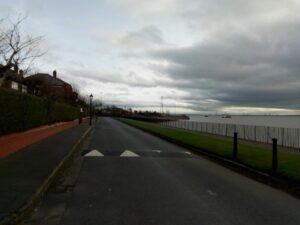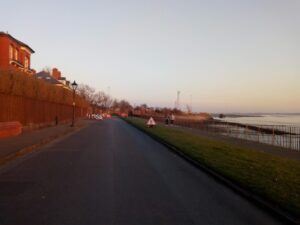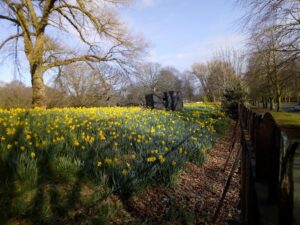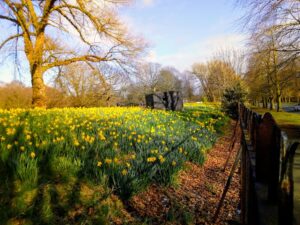Capturing the Focke-Wulf factory.
Some Coronavirus time & VE Day 75 reading, shared previously with a few military history enthusiast friends. Originlly shared with Dr. Jon Clarkson and Bruce Hubbard, and radio producer friend Ashley Byrne.
Securing the Focke-Wulf factory.
Frances’s grandfather, Francis Carl Willmott, known as Billy, was always puzzled as to why he was mentioned in Dispatches for securing a telephone exchange near the end of the war, and promoted from Lieutentant to Captain Willmott.
Frances’ father wrote up his Dad’s wartime reminiscences in 2000. Recently he found that a German historian compiled more information about this action which sheds light on how it was a small strategic move. It’s quite a good story that you might like. I’ve attached a copy. 9 pages (6 text and 3 pictures). In a nutshell, Lt Willmott, his Sergeant, Cameron, driver / batman, Reed, and a Polish officer were attached from Signals to an RAF unit to secure the Focke-Wulf headquarters at Bad Eilsen which the RAF were to use as their HQ in Germany. Ahead of the British advance, but told the area was clear of German troops, it seems the small convoy went right in between two towns on the River Weser where the Americans were engaged in fierce fighting against stiff resistance. The plant they were to take control of was the Focke-Wulf design HQ, and the spurt caught the chief engineer, Kurt Tank, as well as securing the telephone exchange. The funny story about the Sgt and his Sten gun going off, is added to by a footnote in the pamphlet that is missed out in the attached extract and update. Footnote 34, added below.
Peter Tatchell’s campaigning anti-Nazi work gets a surprising mention at the end of the story.
The original 52 page pamphlet is here:
http://nicholaswillmott.tripod.com/id37_m.htm
Though not in booklet form that might be more accessible. It’s a lengthy webpage. There is a rugby connection. At Catterick, Willmott found that his bunkmate was the tamous Welsh international rugby player, Haydn Tanner. Tanner features several times in the anecdotes, including giving Francis his nickname Billie. (I thought it was Billy and after some noted footballer of the time).
Referring to p. 38 of the original pamphlet and bottom of page 2 of the attached.
34. The Small Arms Training Pamphlet No.22 (1942), devoted to the Sten Machine Carbine as it was officially known, includes the following advice:
“If the working parts are forward [i.e. the weapon is cocked, ready to fire] with a full or partially full magazine in the magazine housing, a smart jerk may cause a round to be fired.”
Peter Tatchell’s article about tracing evil Buchenwald Concentration camp doctor Carl Vaernet is here: https://www.petertatchell.net/lgbt_rights/usercybercity/~dko12530/hunt_for_danish_kz.htm.html
Wikipedia explains to me that KZ means Concentration camp: Das Konzentrationslager Buchenwald (KZ Buchenwald).




